|
 This was the thirteenth year Colorado State University has conducted Cool Season Trials at the Annual Flower Trial Garden. The overall goal of this project is to determine which cool-season plant varieties are best suited for marketing and growing in the Rocky Mountain Region. Starting in November 2020, data recording was taken monthly till May 2021, unless there was heavy snow cover. Irrigation was monitored throughout the trial period and any additional water added, besides snow and rain, was recorded. The trial included 60 varieties representing seven taxa including pansies, violas, flowering kale and cabbage, Aurinia, Primula and Arabis. This was the thirteenth year Colorado State University has conducted Cool Season Trials at the Annual Flower Trial Garden. The overall goal of this project is to determine which cool-season plant varieties are best suited for marketing and growing in the Rocky Mountain Region. Starting in November 2020, data recording was taken monthly till May 2021, unless there was heavy snow cover. Irrigation was monitored throughout the trial period and any additional water added, besides snow and rain, was recorded. The trial included 60 varieties representing seven taxa including pansies, violas, flowering kale and cabbage, Aurinia, Primula and Arabis.
This was a difficult winter for these trials. The length of snow cover seemed to have some negative impact on plants in the trial especially in February 2021. In February there was a major freezing event after a week of abnormally high temperatures. Our weather data showed that for a four-day period in February, night temperatures were below zero—almost down to -20°F, not including wind chill factors—and during this time period snow cover was minimal. Additionally, we had geese problems as they especially liked our kale and cabbage entries.
Due to these difficult weather conditions, we did not have an official evaluation day but instead used the monthly records collected by CSU personnel to help determine “Best Of” plants.
All of these varieties preferred sun but will tolerate some shade and prefer some additional moisture. Consider these six cool season plants to add color in the fall/winter landscape even after some harsh winter conditions. A complete report of the 2020-21 Cool Season Trials can be seen on our website: flowertrials.colostate.edu and select Cool Season Winners.
Six hardy varieties with high survival rates included:
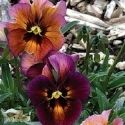 Pansy F1 NatureTM ‘Mulberry Shades’ from American Takii (pictured left) Pansy F1 NatureTM ‘Mulberry Shades’ from American Takii (pictured left)
Blooms on this pansy displayed a beautiful range of colors from a deep purple with a yellow center to light white-pink with yellow center. Twenty-five of 30 plants of this variety survived the winter.
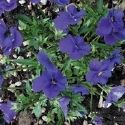 Viola F1 GemTM ‘Electric Blue’ from American Takii (pictured right) Viola F1 GemTM ‘Electric Blue’ from American Takii (pictured right)
This variety looked good throughout the season even considering the difficult weather conditions. The flowers were an attractive dark blue-purple that covered the plants even in the snow. Survival was 24 out of 30 planted.
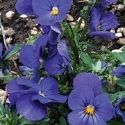 ‘QuicktimeTM Blue’ Viola from PanAmerican Seed (pictured left) ‘QuicktimeTM Blue’ Viola from PanAmerican Seed (pictured left)
The attractive flowers on this variety were dark purple with a yellow center and covered the entire plant. Plants looked outstanding in early spring with 21 out of 30 surviving.
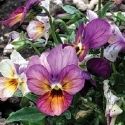 Viola F1 GemTM ‘Plum Antique’ from American Takii (pictured right) Viola F1 GemTM ‘Plum Antique’ from American Takii (pictured right)
The flowers on this variety had range of colors that faded from a deep plum to a light whitepink bloom. Trial survival was 25 plants out of 30 planted.
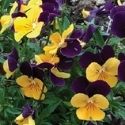 ‘PennyTM Orange Jump-up Imp.’ Viola from Syngenta ‘PennyTM Orange Jump-up Imp.’ Viola from Syngenta
This viola had a very attractive bicolor bloom of yellow-orange and purple with very heavy blooming later in the spring. Survival was high at 28 out of 30 planted.
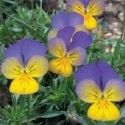 Viola ‘Rebelina Blue and Yellow’ from Sakata Viola ‘Rebelina Blue and Yellow’ from Sakata
The two-toned blue and yellow flowers covered the entire plant and were positioned well above the foliage. Twenty-one plants out of 30 survived.
Photos courtesy Lauren Schriner. This article originally appeared in the September/October 2021 issue of Colorado Green magazine.
Read more in this issue of Colorado Green Now:
Small businesses are the economic backbone
SNOW Magazine releases 2021 Top 100
SBA to offer virtual summit again for 2021
|



 Pansy F1 NatureTM ‘Mulberry Shades’ from American Takii (pictured left)
Pansy F1 NatureTM ‘Mulberry Shades’ from American Takii (pictured left) Viola F1 GemTM ‘Electric Blue’ from American Takii (pictured right)
Viola F1 GemTM ‘Electric Blue’ from American Takii (pictured right) ‘QuicktimeTM Blue’ Viola from PanAmerican Seed (pictured left)
‘QuicktimeTM Blue’ Viola from PanAmerican Seed (pictured left) Viola F1 GemTM ‘Plum Antique’ from American Takii (pictured right)
Viola F1 GemTM ‘Plum Antique’ from American Takii (pictured right) ‘PennyTM Orange Jump-up Imp.’ Viola from Syngenta
‘PennyTM Orange Jump-up Imp.’ Viola from Syngenta Viola ‘Rebelina Blue and Yellow’ from Sakata
Viola ‘Rebelina Blue and Yellow’ from Sakata